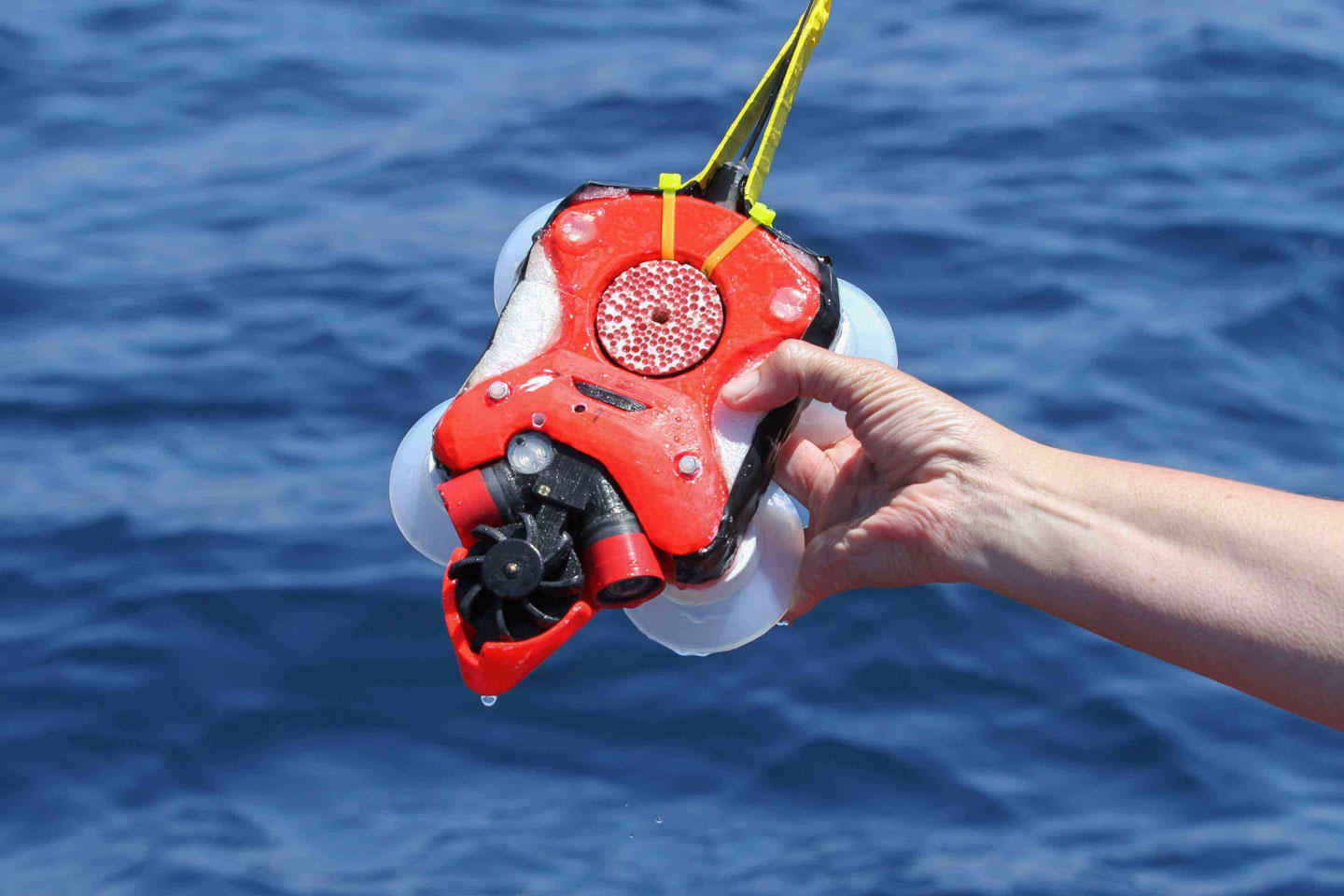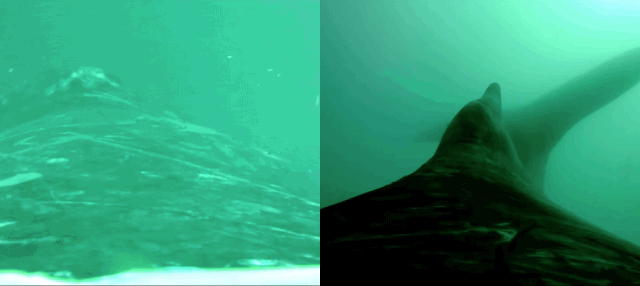Researchers from Stanford’s Hopkins Marine Station have developed a two-lensed camera that sticks to the backs of filter-feeding whales with suction cups. The new device has been used to capture unprecedented footage of whales in action, and it’s offering new insights into the feeding and swimming behaviours of these aquatic beasts.
On the surface of it, filter-feeding sounds like a painstakingly straightforward process: Whale opens mouth, whale gobbles-up copious amounts of krill, whale closes mouth. Those may be the broad strokes, but it’s actually more complicated. Because we rarely have an opportunity to observe whales in their undersea habitat, researchers have struggled to understand the finer details of the process, such as the speeds at which whales approach their tiny prey, how quickly they can change direction and how they adjust in the presence of fish.

The new whale research device. (Image: Jeremy Goldbogen)
In a new study published in Current Biology, lead author David Cade and colleagues describe a sensor that they used to intimately track the comings and goings of baleen filter-feeding whales, or rorqual whales as they’re known to marine biologists, as they forage for prey. The new whale research device, which sticks to the back of the whales with suction cups, contains a first-generation side-to-side-facing dual camera, and it tracks the movements of a tagged whale in three-dimensions.
Working in South Africa, Patagonia, and off both coasts of the United States, the researchers affixed the device to several species of rorquals, including humpback whales, blue whales and minke whales. Like pre-existing tracking devices, it’s also equipped with an accelerometer, magnetometer and pressure and sound recorders.
Looking at the data captured by the device, the researchers found that krill-eating whales tend to follow a distinct pattern of activity. When approaching a cluster of krill, they suddenly increase speed, and open their mouths right at the point of maximum velocity. The sudden inflow of water into their mouths — sometimes as much as 140 per cent of their mass — slows the whale down, but the krill are consumed in the most efficient way possible. Once the whales are back at normal cruising speed, they close their mouths.
When fish are around, the whales’ movements are a bit more dynamic, and they vary their timing. The researchers hypothesise that the whales are responding to the more advanced escape abilities of fish compared to krill. Rather than expel all their energy in an attempt to catch fish, the whales are likely hedging their bets and conserving their energy, which would likely be better served hunting for krill.
This research could help scientists understand the impact that whales are having on our ocean resources. It’s not clear how much fish rorqual whales are consuming, but by studying their eating habits in this way, we stand a better chance of knowing. As the researchers noted in a press statement, “Learning more about rorqual feeding habits can support conservation efforts while also furthering insights into ecosystem processes that have direct effects on human fisheries.”
